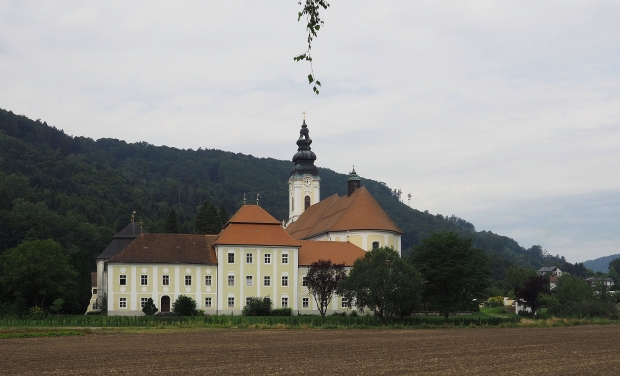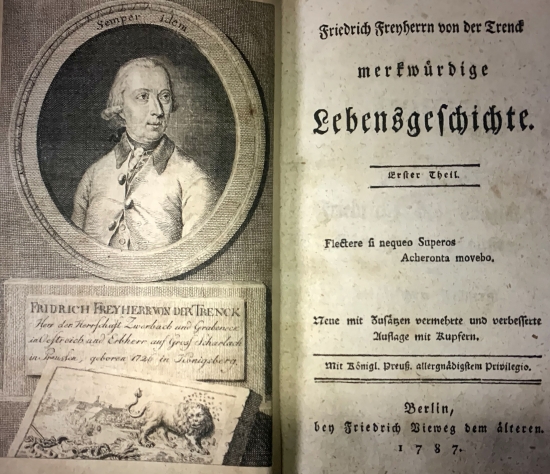

What Had Friedrich Freiherr von der Trenck to Do in Engelhartszell?

Last summer we were in Salzburg and decided to go on photo tour in Engelshartszell in Upper Austria, which is from there “only” two hours away (from our house in Styria it would be a three and a half hours drive). Engelhartszell is a lovely and idyllic place where time seems to have stood still. Try to find it on a map, it is situated at the Danube river, near the Bavarian border.
Well, we know that Friedrich Freiherr von der Trenck was once in Engelszell Abbey. If one would ask whether he had seen the high altar with the painting by Bartolomeo Altomonte and the beautiful stucco statues or not, the answer must be: No! And why do we know? Because the adventurer stayed there in 1746, and the church was built ten years later, the high-altar was finished almost twenty years later.
Would Friedrich Freiherr von der Trenck have been interested to know that the abbey church was inspired by the Wilhering abbey church? That there were almost the same architects, artists and craftsmen working? And that there is a big difference too? In Engelszell the church´s ground floor is shaped as a slightly curved ellipse, unlike the rectangle ground floor in Wilhering.

Would Trenck have liked the unique stucco work? All the statues, putti and decoration in the church, on the pulpit and on the altars, were made of stucco, such as St Bernard on top of the abat-voix. He, a theologian of heart, is defeating Abelard, a French philosopher and theologian of reason. Both men are performing dynamic movements and gestures corresponding to their dispute.

One cannot remain/couldn´t have remained unimpressed by watching these statues made of stucco. The figures, two bishops, on the right side of the high altar, are presumably Peter of Tarentaise and Otto of Freising. In their slight movements and in the breeze that blows through their clothes one can experience the dynamic of the Baroque era.

Now the riddle´s solution: As King Frederic´s the Great orderly officer, Trenck was soon prosecuted by him and arrested in 1746. The rumor says he had had an affair with one of the king´s sisters. Trenck escaped prison, arrived one day in Engelszell where he enjoyed sanctuary with the monks. One day, a tricky constable succeeded in luring him out of the house and bringing him to Vienna where he was imprisoned again. So this (s. photo above) will have been Friedrich Freiherrn von der Trenck´s last view when he was forced to enter the boat.

In Vienna he was sentenced to death, amnestied, became cavalry captain in a Hungarian regiment in 1749 and went on living his adventurous life until his death (on guillotine) 45 years later in Paris.





Post a Comment